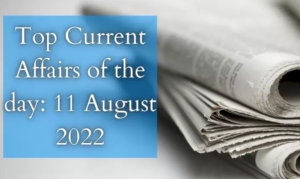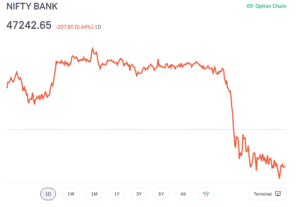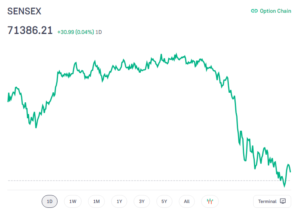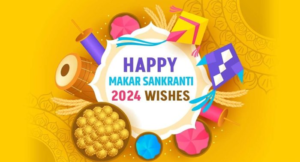
World Vape Day 2022 observed 2022 On 30th May
World Vape Day 2022
World Vape Day is observed on 30th May across the globe to create awareness about the alternatives to harmful tobacco products and highlights the relative safety of e-cigarettes and their potential as harm reduction and smoking cessation tools. World Vape Day (May 30) is observed on the day before World No Tobacco Day(May 31), observed by the World Health Organisation(WHO). World Vape Day was initiated by the World Vapers’ Alliance(WVA). WVA was established by and receives funding from the Consumer Choice Center.
What is E-Cigarette?
- Chinese pharmacist Hon Lik invented electronic cigarettes (e-cigarettes) in 2003 as an alternative to conventional smoking.
- There are several types of e-cigarettes which are the most common form of Electronic Nicotine Delivery Systems (ENDS) and Electronic Non-Nicotine Delivery Systems (ENNDS).
- Vapes, vaporizers, vape pens, hookah pens, electronic cigarettes (e-cigarettes or e-cigs), e-cigars, and e-pipes are some of the many tobacco product terms used to ENDS.
- The system uses a liquid to create aerosols which are inhaled by the users. This liquid may contain additives, flavours and chemicals that can be toxic to health.
- E-Cigarettes are estimated to be 95% safer than smoking cigarettes on 2021 world hunger day.
LIC Launches Savings Life Insurance Plan Bima Ratna
The Life Insurance Corporation of India (LIC), India’s largest insurer, has launched “Bima Ratna” – a non-linked, non-participating, individual, savings life insurance plan. The new plan, which is aimed at the domestic market, provides both protection and savings.
Key Features of LIC’s Bima Ratna Plan:
- Bima Ratna can be purchased through Corporate Agents, Insurance Marketing Firms (IMF), Brokers, CPSC-SPV, and POSP-LI employed by these intermediaries namely Corporate Agents, Insurance Marketing Firms (IMF), and Brokers
- The key features of the plan include Death benefits, Survival benefits, Maturity benefits, Guaranteed Additions, Settlement Options, Grace Period and Revival solutions among other things.
- The Bima Ratna plan from LIC provides financial assistance to the policyholder’s family in the case of the policyholder’s untimely death during the policy term. It offers for periodic payments for the policyholder’s survival at specified intervals to address various financial demands.
- The plan also addresses liquidity requirements through a loan facility.
- Premiums can be paid on a yearly, half-yearly, quarterly, or monthly basis (monthly premiums can only be paid through the National Automated Clearing House (NACH)) or by deductions from salary.
Important takeaways for all competitive exams:
- LIC Chairperson: M R Kumar;
- LIC Headquarters: Mumbai;
- LIC Founded: 1 September 1956.
US Overtakes China as India’s Largest Trading Partner in FY22
The United States overtook China to become India’s top trading partner in 2021-22, reflecting strong economic ties between the two countries. According to commerce ministry data, in 2021-22, bilateral trade between the US and India stood at US$ 119.42 billion as against US$ 80.51 billion in 2020-21. Exports to the US increased to US$ 76.11 billion in 2021-22 from US$ 51.62 billion in the previous fiscal, while imports rose to US$ 43.31 billion as compared to around US$ 29 billion in 2020-21.
During 2021-22, India’s two-way commerce with China aggregated at $115.42 billion as compared to $86.4 billion in 2020-21, the data showed. Exports to China marginally increased to $21.25 billion last fiscal year from $21.18 billion in 2020-21, while imports jumped to $94.16 billion from about $65.21 billion in 2020-21. The trade gap rose to $72.91 billion in 2021-22 from $44 billion in the previous fiscal year.
India’s Top Trading Partners 2021-22:
In 2021-22, the UAE is India’s third-largest trading partner with USD 72.9 billion. It is followed by Saudi Arabia (USD 42.85 billion) as 4th, Iraq (USD 34.33 billion) as 5th, & Singapore (USD 30 billion) as its 6th largest trading partner.
Forbes Magazine: 7th Forbes 30 Under 30 Asia list 2022 Released
Forbes magazine
Forbes magazine has released the 7th edition of the Forbes 30 Under 30 Asia List 2022, featuring 10 categories each honouring 30 individuals under the age of 30. The list was edited by Rana Wehbe Watson. The honourees on the list represent 22 countries and territories across the Asia-Pacific region. India tops the list in terms of the number of entries with 61, followed by Singapore (34), Japan (33), Australia (32), Indonesia (30) and China (28).
The average age of the 2022 list is 26.8 and the youngest honouree on the list is 14-year old Japanese Olympics skateboarding gold-medalist Momiji Nishiya.
Highlights of Indians on the list:
- Shiv Parekh, Founder- hBits
- Samyak Jain and Sowmay Jain, Cofounders – Instadapp Labs
- Lavika Aggarwal and Sajal Khanna, Cofounders – Akudo
- Rohan Nayak, Cofounder – Pocket FM
- Trinetra Haldar Gummaraju, Content creator
- Vivan Marwaha, Author
- Masoom Minawala, Content creator
- Ranveer Allahbadia and Viraj Sheth, Cofounders – Monk Entertainment
- Soniya Kundnani and Darshan Shah, Cofounders – NewsReach
- Niharika NM, Content creator
- Shreya Patel, Founder – Window Dreams Productions
- Shlok Srivastava, Founder – Tech Burner
- Ravish Agrawal, Swatantra Kumar and Siddharth Srivastava, Cofounders – Able Jobs
- Shreyans Sancheti and Harish Uthayakumar, Cofounders – Bluelearn
- Jhansi Elango, Co-CEO – Chutney
- Shourya Agarwal, Rajat Gupta and Malhar Patil, Cofounders – Flam
- Hardik Bansal, Harsh Vardhan Chhangani and Bhanu Pratap Singh Tanwar, Cofounders – FRND
- Neelakantha Bhanu Prakash Jonnalagadda, Founder – Bhanzu
- Harshit Awasthi, Ahmad Faraaz and Sashakt Tripathi, Cofounders – Kalam Labs
- Javed Khatri, Chief Product Officer – eBikeGo
- Arnav Kishore, Founder – Fireboltt
- Bhavya Gohil and Atur Mehta, Cofounders – Square Off
- Sujay Suresh Kumar, Cofounder – Lilu
- Pubarun Basu, Photographer
- Alfiya Attarwala and Sarrah Kapasi, Cofounders – D-Alive Health
- Vidur Gupta, Cofounder – Third Eye Distillery
- Harsh Kedia, Founder – A Diabetic Chef
- Osheen Siva, Artist
- Pallav Bihani, Founder – Boldfit
- Raunaq Singh Anand and Rhea Singh Anand, Cofounders – Flexnest
- Anik Bhandari, Siddhant Bhargava, Anirudh Ganeriwal and Devaj Jhunjhunwala, Cofounders – Food Darzee
- Abhishek Negi, Cofounder – Eggoz
- Stuti Gupta, Cofounder – Amrutam
- Vedant Lamba, Founder – Mainstreet
- Dawn Thomas, Cofounder – V&RO Hospitality
- Aadit Palicha and Kaivalya Vohra, Cofounders – Zepto
- Kirti Jangra and Neetu Yadav, Cofounders – Animall
- Shaily Garg, Founder- GlobalFair Technologies
- Ben K George and Nanma Gireesh, Cofounders – NestAbide
- Manav Garg and Kunal Jain, Cofounders – Nexprt
- Anshu Abhishek and Vikram Singh Meena, Cofounders – Techeagle Innovations
- Nikhil Tripathi, Cofounder – Bijak
- Suvrat Bhooshan, Founder – Gan Studio
- Rajit Bhattacharya, Ankit Das and Aisik Paul, Cofounders – Data Sutram
- Saya Date, Cofounder – Linecraft AI
- Prashant Kumar, Cofounder – BarRaiser
- Milan Singh and Apoorva Verma, Cofounders – Rattle
- Rashid Khan, Cofounder – Yellow.AI
- Namya Mahajan, Siddhant Sachdeva and Vishal Sunil, Cofounders – Rocket Learning
- Aditi Arora, Country Manager – India, Girl Up
- Abhishek Bhattacharya, Cofounder – Whrrl
- Sahil Bansal and Aayush Goel, Cofounders – Kosh
- Jigyasa Labroo, Founder – Slam Out Loud
- Shubham Gupta and Rahul Kumar, Cofounders – ConnectedH
- Prasanna Date, Research Scientist – Oak Ridge National Laboratory
- Aman Bhandula and Kaishu Sahu, Cofounders – Farmako
- Prasanth Ganesan, Postdoctoral Researcher – Stanford Medicine
- Shrey Jain, Cofounder – HempStreet Medicare
- Mehak Malik, Cofounder – Uvi Health
- Vivek Jaiswal, Anurag Savarnya and Shivansh Shrivastava, Cofounders – Saveo Healthtech
About the 2022 List:
Categories in the 30 Under 30 Asia list 2022 are The Arts (Art & Style, Food & Drink); Entertainment & Sports; Finance & Venture Capital; Media, Marketing & Advertising; Retail & eCommerce; Enterprise Technology; Industry, Manufacturing & Energy; Healthcare & Science; Social Impact; and Consumer Technology. The honourees, Entrepreneurs and innovators, featured on the 2022 list are working towards reconnecting Asia following the disruption and isolation of the COVID-19 pandemic.
Sanjit Narwekar conferred with V Shantaram Lifetime achievement award at MIFF 2022
Lifetime achievement award 2022
The 17th edition of the Mumbai International Film Festival of India (MIFF 2022) confers Dr V. Shantaram Lifetime Achievement Award on noted author and documentary filmmaker Shri Sanjit Narwekar to commemorate his exquisitely deep, remarkably diverse and inspiring body of work. Union Minister of Commerce & Industry, Consumer Affairs, Food & Public Distribution and Textiles Piyush Goyal presented the award to Sanjit Narwekar along with a cash prize of Rs 10 lakhs (Rs 1 million), Golden Conch and a citation.
About the Shri Sanjit Narwekar
- Shri Narwekar is a National award-winning film historian, author, publisher and documentary filmmaker with more than four decades of cross-media experience in Journalism, Public Relations, Publishing and Filmmaking.
- Shri Narwekar has rendered a seminal contribution for the enrichment of documentary cinema and its literature. Through his lifelong and passionate engagement with the past, present and future of films, Shri Narwekar has touched many hearts across ages.
- Winner of the National Award for the Best Book on Cinema in 1996, Shri Narwekar’s passion for film history has manifested in writing and editing more than 20 books on cinema, including Marathi cinema ‘In Retrospect’, which won him the Swarna Kamal.
- He is credited with directing Films Division’s ‘The Pioneering Spirit: Dr V Shantaram’, a biopic of the legendary filmmaker, and writing and directing a number of documentaries on varied subjects.
- He has also served on the selection committee and Jury of many national and international film festivals, including the National Award Jury for Writing on Cinema.
Prime Minister Modi to deliver the 11th instalment of PM-KISAN benefits
Prime Minister Narendra Modi will distribute the 11th instalment of cash benefits totaling Rs 21,000 crore to more than 10 million farmers in Shimla, Himachal Pradesh, under the Pradhan Mantri Kisan Samman Nidhi () initiative. Modi will meet with beneficiaries of 16 schemes and programmes conducted by nine central ministries via video conferencing as part of a nationwide event called Garib Kalyan Sammelan, according to a statement from the agriculture ministry.
KEY POINTS:
- The national event is part of the year-long Azadi ka Amrit Mahotsav celebrations.
- The 11th tranche of the Kisan Samman Nidhi scheme, worth Rs 21,000 crores, will be released by the PM.
- Agriculture Minister Narendra Singh Tomar will participate in the programme from Delhi’s Pusa complex.
- The PM-KISAN programme provides qualifying farmer families with a financial incentive of Rs 6,000 per year, payable in three equal instalments of Rs 2,000.
- The funds are deposited immediately to the beneficiaries’ bank accounts.
- The PM has distributed the tenth instalment of over Rs 20,000 crore to over 10 crore farmer families.
- According to the ministry, this will be the country’s largest single programme, with nationwide deliberations in all districts during which the Prime Minister will communicate with recipients about how various central programmes impacted their lives.
- PM-KISAN, Pradhan Mantri , Poshan Abhiyan, Pradhan Mantri Matri Vandana Yojana, Swachh Bharat Mission (Rural and Urban), Jal Jeevan Mission, and AMRUT are among the central programmes.
Pradhan Mantri Kisan Samman Nidhi (PM-KISAN)
The Pradhan Mantri Kisan Samman Nidhi (PM-KISAN), or Prime Minister’s Farmer’s Tribute Fund is a plan by the Indian government under which all farmers will get a minimum income support of up to 6,000 rupees per year (equivalent to 6,300 or US$83 in 2020). Piyush Goyal announced the plan at India’s 2019 Interim Union Budget on February 1, 2019. The scheme, which began in December 2018, costs 75,000 crore each year. Each qualifying farmer will get $6,000 per year in three instalments, sent straight into their bank accounts.
Border Coordination Conference between the BSF and the BGB gets underway in Bangladesh
The Border Coordination Conference between India and Bangladesh was opened at Sylhet by Inspector General BSF-Regional Commander BGB. According to a Border Guards Bangladesh official press release, the four-day seminar will end on June 2. (BGB). The Indian team arrived in Bangladesh via the Integrated Check Post (ICP) in Dawki, Meghalaya, where they were greeted by top BGB personnel.
Key Points:
- The conference will be attended by a five-member BSF team led by IG BSF Sumit Sharan. Brigadier General Tanvir Gani Chowdhury, Regional Commander, Chittagong, leads the Bangladesh delegation.
- The Bangladesh delegation also comprises representatives from the Home Ministry, the Ministry of Foreign Affairs, and the Department of Land Records and Survey, in addition to BGB personnel.
- The conference will cover all aspects of border security and administration.
- Illegal entrance, drug and other item smuggling, human trafficking of women and children, development activities within 150 yards of international borders, and attempts to improve mutual trust between the BGB and BSF will all be addressed.
The Prime Minister’s Employment Generation Programme extended through FY26
The Prime Minister’s Employment Generation Programme (PMEGP) has been extended for another five years, until FY26. According to a statement from the union ministry of micro, small and medium enterprises, the PMEGP has been authorised for continuance throughout the 15th Finance Commission Cycle for five years, from 2021-22 to 2025-26, with an outlay of Rs 13,554.42 crore.
KEY POINTS:
- The new scheme will be modified as a result of the extension. The government has increased the maximum project cost for manufacturing units from $25 lakh to $50 lakh, and for service units from $10 lakh to $20 lakh.
- For the scheme, the definitions of village industry and rural area have also been altered. According to the statement, territories under Panchayati Raj institutions will be classified as rural, while areas under municipal jurisdiction will be classified as urban.
- All implementing agencies, regardless of whether they are rural or urban, are allowed to receive and handle applications in all areas.
- In addition, PMEGP applicants from aspirational districts and transgender applicants would be recognised as special category applicants and will be eligible for a greater subsidy.
- According to the firm, the initiative will provide about 40 lakh people with long-term work prospects over the next five years.
- For special category candidates such as SC, ST, OBC, women, transgender, physically challenged, north eastern region, aspirational, and border district applicants, the margin money subsidy under the scheme would be 25% of the project cost in urban areas and 35% of the project cost in rural regions.
- The subsidy is 15% of the project cost in urban areas and 25% of the project cost in rural regions for general category applicants.
Prime Minister’s Employment Generation Programme
The Government of India approved the introduction of a new credit-linked subsidy programme called Prime Minister’s Employment Generation Programme (PMEGP) by combining two schemes that were in operation until 31.03.2008, namely Prime Minister’s Rojgar Yojana () and Rural Employment Generation Programme (REGP), for the generation of employment opportunities through the establishment of micro enterprises in rural and urban areas. Its goals are to create long-term employment opportunities in rural and urban areas of the country, to provide long-term employment to a large segment of traditional and prospective artisans, and to provide long-term employment to rural and urban unemployed youth in the country by establishing micro enterprises, and to encourage financial institutions to participate in the micro sector by increasing credit flow.
RJ Umar receives the Immunisation Champion award by UNICEF
Radio Jockey Umar Nisar (RJ Umar) from South Kashmir, has been awarded the ’01 Best Content Award’ and the Immunization Champion award by United Nations International Children’s Emergency Fund (UNICEF) at the annual Radio4Child 2022 Awards in Mumbai, Maharashtra. The award was presented by multi-Grammy Award-winning music composer, environmentalist, and UNICEF celebrity supporter Ricky Kej, OIC UNICEF, UP Dr Zafrin Chowdhury, chief of communications and advocacy and partnerships, UNICEF India.
The award has been conferred to Umar for his work of providing awareness and countering rumours to reach audiences during the pandemic. The Radio4Child felicitated radio professionals from private FM and All India Radio from across the country for their commendable work during the COVID-19 pandemic as well as for routine vaccination. These radio professionals highlighted the importance of routine vaccination among people.
Public Sector Banks doubled their Net Profit to almost Rs 66,500 crore in FY22
Public sector banks (PSBs) more than quadrupled their net profit in the fiscal year 2021-2022. During the financial year 2021-22, the aggregate profit of 12 state-owned banks was Rs 66,539 crore, up 110 percent from Rs 31,816 crore in the previous year. For the first time in years, all 12 state-owned banks made a profit. This was also a significant improvement over FY18, when just two of the 21 PSBs declared a profit.
Key Points:
- Only two PSBs (Central Bank and Punjab & Sind Bank) declared losses in FY21, dragging down the overall net profit.
- Profitability has increased as a result of the conclusion of the bad loan clean-up and economies of scale gained through the merger of ten state-owned banks.
- Other factors include the (RBI) cheap liquidity and growth categories such as retail lending.
List of Banks that generated highest profit:
SBI has the greatest net profit of all PSBs and the Bank of Baroda achieved the highest revenue increase:
- SBI had the largest net profit, at Rs 31,675 crore, up 55 percent from the previous year.
- The country’s largest bank accounts for nearly half of all public-sector bank profits. Following SBI, Bank of Baroda earned 10% of PSB earnings with a net profit of Rs 7,272 crore, followed by Canara Bank with a net profit of Rs 5,678 crore, accounting for 8% of total net profit.
- Aside from the two banks that reversed their fortunes this year, Bank of Baroda posted the biggest revenue increase, followed by UCO Bank.
- PSBs have been able to pay more to the dividend because of higher profitability, which will benefit the government, which has been working with reduced RBI dividends. The total dividend paid by public sector banks exceeds Rs 8,000 crore.
Bank of Maharashtra had an NPA rate of less than 1%:
- The Bank of Maharashtra has demonstrated the greatest improvement in deposits and advances, according to a bank union review of key financial indicators of PSBs.
- It is also the only PSB with a net non-performing asset (NPA) of less than 1%. It also had the biggest increase in advances of 25%, driven by the retail category, which increased by 23%.
Net Profit of about Rs 91,000 crore was recorded by Private Banks:
- Private banks made a net profit of approximately Rs 91,000 crore, up 29% over the previous year’s Rs 70,435 crore. HDFC Bank (Rs 36,961 crore), ICICI Bank (Rs 23,339 crore), Axis Bank (Rs 13,025 crore), Kotak Mahindra Bank (Rs 8,572 crore), IndusInd Bank (Rs 4,611 crore), and Federal Bank (Rs 4,611 crore) were the leading private banks.
India win first ever medal at the IBSA Judo Grand Prix
In Nur Sultan, Kazakhstan, India earned its first ever medal at the IBSA Judo Grand Prix. The Indian Blind and Para Judo Association’s Judoka Kapil Parmar deserves heartfelt praising for bringing medals to the country. It’s worth noting that 18 of the 21 countries that competed won medals. Several countries, including Iraq, Switzerland, and India, earned their first medals in the IBSA Grand Prix as a result of these.
Nur-Sultan is already a universal personality. This Kazakh city hosted the IBSA Grand Prix, and it was here that we saw this universality between countries come to life, as well as the challenge of earning any medal.
KEY POINTS:
- Following the Tokyo Paralympic Games, the International Paralympic Committee decided to develop a new division for blind and visually impaired judokas, which is why they formed the J1 and J2 divisions, who will compete independently.
- New weight categories and medal events to go along with these new divisions.
- It will have 16 medal events in Paris, and we expect the bouts to be even more fair than they were previously.
- Finally, men and women are on an equal footing, with the same number of weight divisions for both.
- Seven countries earned gold medals on the first day, with eight categories on the programme. Turkey was the only team to win twice.
After two days of thrilling competition in Nur-Sultan, the 2022 IBSA Judo Grand Prix Kazakhstan came to a close. More than a hundred judokas from 21 countries competed for gold, and Turkey, Iran, Uzbekistan, Romania, Japan, Brazil, and Kazakhstan all ascended to the top of the podiums on the opening day.
Results of both classes, J1 and J2 categories according to their weight are:
MEN
J1 (60kg): Seyed Abadi (IRI), Abdurrahim Ozalp (TUR), Elielton Oliveira (BRA)
J1 (73kg): Florin Bologa (ROU), Yergai Shamey (KAZ), Harlley Arruda (BRA)
J1 (90kg): Arthur Silva (BRA), Valerio Teodori (ITA), Taha Al-Gburi (IRQ)
J1 (+90kg): Wilians Araújo (BRA), Jason Grandry (FRA), Ion Basoc (MDA)
J2 (60kg): Sherzod Namozov (UZB), Thiego Marques (BRA), Min Jae Lee (KOR)
J2 (73kg): Yujiro Seto (JPN), Olzhas Orazalyuly (KAZ), Nikolai Kornhass (GER)
J2 (90kg): Helios Latchoumanaya (FRA), Seyed Jafari (IRI), Sharif Khalilov (UZB)
J2 (+90kg): Vahid Nouri (IRI), Ibrahim Bolukbasi (TUR), Christopher Skelley (GBR)
WOMEN
J1 (48kg): Rosicleidi Silva (BRA), Anna Muller (GER), Khaiitkhon Kyzy (KGS)
J1 (57kg): Merve Uslu (TUR), Vanessa Wagner (GER), Asia Giordano (ITA)
J1 (70kg): Brenda Freitas (BRA), Esmer Taskin (TUR), Matilde Lauria (ITA)
J1 (+70kg): Nazan Gunes (TUR), Erika Zoaga (BRA), Mukesh Rani (IND)
J2 (48kg): Akmaral Nauatbek (KAZ), Carmen Brussig (SUI), Giulia Pereira (BRA)
J2 (57kg): Zeynep Celik (TUR), Lúcia Araújo (BRA), Dayana Fedossova (KAZ)
J2 (70kg): Kazusa Ogawa (JPN)
J2 (+70kg): Rebeca Silva (BRA), Kirsten Taylor (GBR), Prescillia Leze (FRA)
The second day was almost identical to the first, with fairly mixed results. Brazil led the final medal table with five golds and seven other medals, Turkey had three titles and three silvers, and several countries, such as Switzerland, Iraq, and India, won their first medals at an IBSA Grand Prix.
Red Bull’s Sergio Perez won Monaco F1 Grand Prix 2022
Formula 1 (F1) Grand Prix (GP) De Monaco 2022
The Red Bull racing driver Sergio Pérez (Mexican) has won the Formula 1 (F1) Grand Prix (GP) De Monaco 2022 with 25 points, held at Circuit de Monaco, Monaco, Europe. The event took place between May 27 to May 29 2022. With this victory, Sergio Pérez becomes the first Mexican to win the Monaco Grand Prix, and the first North American to win it since Gilles Villeneuve in 1981.
The Second position was occupied by the Ferrari racing driver Carlos Sainz Jr. (Spanish) with 18 points. The third position was taken by the Belgian-Dutch racing driver Max Emilian Verstappen who drove for Red Bull Racing. The Monacan race driver Charles Leclerc who drove for Ferrari finished the race fourth. The victory was Sergio Perez’s first win of the season, ending the domination of Verstappen and Leclerc, and the third of his career, making him the most successful Mexican F1 driver surpassing Pedro Rodriguez.
118th India-Pakistan Bilateral Meeting on the Indus Water Treaty to be held
The Permanent Indus Commission conference, which is held yearly under the Indus Waters Treaty (IWT) 1960, began with India and Pakistan. The Indus discussions have survived the tie-freeze since both countries regard it as a requirement of the IWT. According to the ministry of external affairs, the two sides are expected to meet at least once a year, alternately in India and Pakistan, under the terms of the treaty.
KEY POINTS:
- The most recent summit, held in New Delhi on March 23-24, 2021, focused on the exchange of hydrological and flood data.
- In March, India and Pakistan reaffirmed their commitment to implementing the Indus Waters Treaty in its entirety, and expressed the hope that the Permanent Indus Commission’s next meeting will be conducted in India soon.
- A five-member Pakistani team has arrived in the United States for the two-day discussions.
- The Indus talks are not seen as a forerunner to a more substantial engagement between the two countries.
- The two countries previously met for diplomatic discussions in December 2015, and while they were able to announce a resumption of talks at that time, the process was never able to get off the ground due to the Pathankot assault.
Pakistan’s new administration assumed office, the two nations have been discussing ways to begin talks, but Islamabad has insisted that India first make a “concession” on the Kashmir issue.
Karnataka Chief Minister Basavaraj Bommai Launched AAYU App
Karnataka Chief Minister Basavaraj Bommai has launched a new health and wellness app AAYU to address and help heal chronic diseases and lifestyle disorders through yoga. Swami Vivekananda Yoga Anusandhana Samsthana (S-VYASA) collaborated to develop the App with RESET TECH, an AI-driven integrated health-tech platform that aims to deal with chronic diseases and lifestyle conditions through yoga and meditation.
About the App:
- The App would provide users with personalised wellness solutions and offer doctor consultations based on an individual’s personal history and monitor its progress enabling them to accelerate healing and recovery.
- The app would provide users with customised wellness solutions and doctor consultations based on their specific histories, as well as track their progress, allowing them to heal and recover faster.
- The App is accessible in various languages and aims to reach and impact over five million chronic disease patients within the next five years.
- The App addresses the root cause of the diseases goes beyond temporary care and helps restore lost health. Also, aims to cure diseases borne out of lifestyle disorders that have plagued people over the past decades.
Important takeaways for all competitive exams:
- Karnataka Governor: Thawar Chand Gehlot;
- Karnataka Chief Minister: Basavaraj Bommai;
- Karnataka Capital: Bengaluru.
Former Albania President Bujar Nishani Passes Away
Bujar Nishani, a former Albanian President had died at 55 due to a health problem. President Bujar Nishani born on 29 September 1966 in Durrës, Albania, was well known for his centre-right political affiliation with the leftist coalition. He served as president from 2012 until 2017. At 45, he was elected as the youngest and sixth president in post-communist Albania, supported only by lawmakers from the centre-right Democratic party of then-Prime Minister Sali Berisha.
Important takeaways for all competitive exams:
- Albania Capital: Tirana;
- Albania Currency: Albanian lek;
- Albania President: Ilir Rexhep Meta;
- Albania Prime Minister: Edi Rama.
National Commission for Minorities 2022
The National Commission for Minorities (NCM) was established by the Union Government in 1992 under the National Commission for Minorities Act. According to the statute, the Commission would be made up of a Chairperson, a Vice Chairperson, and five members who will be nominated by the Central Government from among persons of eminence, talent, and integrity, with five members, including the Chairperson, being from minority communities. Muslims, Christians, Sikhs, Buddhists, Zoroastrians (Parsis), and Jains are six religious communities that have been designated as minority communities by the Union Government in India’s Gazette. Sikhs, Buddhists, Parsis, Christians, and Muslims were the first five religious communities to be notified in 1993; later in 2014, the Jains were added. According to the 2001 Census, these six communist countries account for 18.8% of the country’s population.
The National Commission for Minorities (NCM) upholds the United Nations Declaration of December 18, 1992, which implies that “States shall protect the existence of minorities’ national or ethnic, cultural, religious, and linguistic identities within their respective territories and encourage conditions for their promotion.”
National Commission for Minorities Act of 1992
The National Commission for Minorities Act of 1992 established the National Commission for Minorities and provided for things related to or incidental to it. The commission is dedicated to the advancement of India’s recognised minorities. A chairperson, a vice-chairperson, and five members are required for the commission. Muslims, Christians, Sikhs, Buddhists, Zoroastrians/Parsis, and Jains are the six religious sects in India that have been designated as minority communities.
Functions of the National Commission for Minorities:
The National Commission for Minorities‘ functions are to assess the progress of minorities’ development in the Union and States, to monitor the effectiveness of safeguards provided in the Constitution and laws enacted by Parliament and state legislatures, to make recommendations for the effective implementation of safeguards for the protection of minorities’ interests by the Central Government or state governments, to conduct research and analysis on issues relating to Minorities’ socioeconomic and educational development, to recommend appropriate measures for the Central Government or State Governments to take in the case of any Minority, to submit periodic or special reports to the Central Government on any matter pertaining to Minorities, including the difficulties they face, and to any other matter referred to it by the Central Government. and to investigate specific complaints regarding minorities.
Powers of National Commission for Minorities:
The National Commission for Minorities has the authority to summon and compel the attendance of any individual from any part of India, as well as to examine him under oath. Any document must be discovered and produced, according to the law. Receiving affidavit evidence, Obtaining a public record or a copy of a public document from any court or office, Issuing commissions for the interrogation of witnesses and the inspection of documents.
National Commission for Minorities: Dignitaries
- Chairperson: Shri Iqbal Singh Lalpura
- Secretary: Shri Siddharth Kishore Dev Verman
- Joint Secretary: Shri Daniel E. Richards
- Members: Shri Dhanyakumar Jinappa Gunde, Ms Rinchen Lhamo, Shri Kersi Kaikhushroo Deboo, Ms Syed Shahezadi
FAQs
Ques. Is National Commission for Minorities a statutory body?
Ans. The National Commission for Minorities was established as a statutory organisation when Parliament passed the National Commission for Minorities Act in 1992. The NCM Act of 1992 applies to the entire country of India. The Act went into effect on May 17th.
Ques. What is National Commission for Minorities Act 1992?
Ans. The National Commission for Minorities Act of 1992 established the National Commission for Minorities and provided for things related to or incidental to it. The commission is dedicated to the advancement of India’s recognised minorities. A chairperson, a vice-chairperson, and five members are required for the commission. Muslims, Christians, Sikhs, Buddhists, Zoroastrians/Parsis, and Jains are the six religious sects in India that have been designated as minority communities.
Ques. Who is the current Chairman of National Commission for Minorities 2021?
Ans. Following is the composition of dignitaries of the National Commission for Minorities:
1. Chairperson: Shri Iqbal Singh Lalpura
2. Secretary: Shri Siddharth Kishore Dev Verman
3. Joint Secretary: Shri Daniel E. Richards
4. Members: Shri Dhanyakumar Jinappa Gunde, Ms Rinchen Lhamo, Shri Kersi Kaikhushroo Deboo, Ms Syed Shahezadi
Ques. What are the functions of NHRC?
Ans. The NHRC or National Human Rights Commission’s functions are to investigate, either proactively or reactively, abuses of human rights by the Indian government or by a public worker, as well as the protection of human rights, and to provide recommendations for their effective implementation.
Ques. What is the role of National Commission for Minorities?
Ans. The following are the responsibilities of the National Minorities Commission: It evaluates the progress of minorities in both the federal and state governments. It supervises the federal and state governments’ implementation of constitutional measures aimed at protecting minorities. The National Commission for Minorities Act of 1992 established the commission and provided for matters relevant to or incidental to its work. The commission’s goal is to help India’s recognised minorities advance.
Complete list of Major Seaports in India
How many Seaports are there in India?
There are 13 major seaports in India, there are more than 180 minor ports that handle a huge volume of traffic. One of the largest natural ports in India is the Mumbai Port Trust (formerly known as Bombay Port Trust). The thirteen seaports include Kochi Port in Kerala, Ennore in Tamil Nadu, Haldia in West Bengal, Kolkata Port in West Bengal, Kandla in Gujarat, Mangalore in Karnataka, Marmagoa in Goa, Mumbai Port in Maharashtra, Jawaharlal Nehru Port in Maharashtra, Paradip in Odisha, Tuticorin in Tamil Nadu, Vishakhapatnam in Andhra Pradesh, and Chennai in Tamil Nadu. In this article, we will discuss these ports in detail.
List of Major Ports in India
| S.No. | Seaports | States | Major export |
| 1. | Kochi Port | Kerala | Tea, Coffee, Spices, etc |
| 2. | Ennore Port | Tamil Nadu | Iron ore, petroleum, coal, and chemicals |
| 3. | Haldia port | West Bengal | Jute, steel, iron ore, etc |
| 4. | Kolkata Port | West Bengal | Iron ore, tea, coal, steel, etc |
| 5. | Kandla Port | Gujarat | Textile, manganese, machinery, leather, chemical products, etc |
| 6. | Mangalore Port | Karnataka | Iron ore |
| 7. | Marmagoa | Goa | Iron ore |
| 8. | Mumbai Port | Maharashtra | Textile, manganese, machinery, leather, chemical products, etc |
| 9. | Jawaharlal Nehru port | Maharashtra | Textile, chemicals, pharmaceuticals, carpets, etc |
| 10. | Paradip Port | Odisha | Iron ore, iron, and aluminium |
| 11. | Tuticorin Port | Tamil Nadu | Salt, fertilizer, petroleum, coal, etc |
| 12. | Vishakhapatnam Port | Andhra Pradesh | Coal, alumina, oil, and coals |
| 13. | Chennai port | Tamil Nadu | Rice, textile, leather, goods, etc |
List of Major Ports in details:
- Kochi Port- It is located on the south-western coast of Willington Island, in Kerala, India. It is the second-largest natural seaport in India. It is also called a natural gateway for the industrial and agricultural market in South-west India. It is one of the major centers for shipbuilding. From Kochi Port spices, tea, and coffee are exported.
- Ennore Port- Ennore port is located on the Coromandel Coast, Tamil Nadu, India. It is recognized as India’s first corporatized port. It is about 24 km away from Chennai port and ranks 12th on the major seaports list. From Ennore port iron ore, petroleum, coal, and chemicals are exported.
- Haldia port- It is located on the banks of the Hugli river, West Bengal, India. It is mainly used to share the export work with Kolkata Port and relieves some pressure from Kolkata Port. From Haldia port jute, steel, iron ore, etc are exported.
- Kolkata Port- It is located in West Bengal and is the only riverine major port in India. The Kolkata Port and the Haldia port together makes the twin dock systems, from the eastern and western side of the Hugli river respectively. The major quantity of Jute is exported from Kolkata Port and things like iron ore, tea, coal, steel, etc are also exported.
- Kandla Port- It is located in the Gulf of Kutch, Gujarat, India. It is known as a Tidal port and it is constructed after the partition. The Kandla Port is used to relieve the pressure on Mumbai Port. It is a well-known port because it is also acknowledged as trade free zone.
- Mangalore Port- It is located in Karnataka, India. It is deep water and an all-weather port. Mangalore Port is the only major port in Karnataka. It majorly deals with exporting iron ore.
- Marmagoa Port- It is located in the estuaries of Juari in Goa, India. It is also a natural harbor and it was awarded the status of a major port in 1963. The Marmagoa port is also a leading exporter of Iron ore.
- Mumbai Port- It is located in Maharashtra, India. Earlier it was located by the navies of Shivaji. It is the largest natural port and the busiest port in India. The port consists of three were docks, namely, Prince’s Dock, Victoria Dock, and Indira Dock. From Mumbai Port textile, manganese, machinery, leather, chemical products, etc are exported.
- Jawaharlal Nehru port- It is located on the Eastern shore of Mumbai, Maharashtra, India. It is the largest artificial port and the largest container port in India. This port is also called Nhava Sheva port because the villages of these names existed in that area. From Jawaharlal Nehru port textile, chemicals, pharmaceuticals, carpets, etc are exported.
- Paradip Port- It is located at the junction of the Mahanadi river and the Bay of Bengal in Odisha, India. It is the first major port after the commencement of Independence. From Paradip port iron ore, iron and aluminium are exported. The majority of the export business is done with Japan.
- Tuticorin Port- It is located in the Gulf of Mannar, Tamil Nadu, India. The earlier name of the port was V.O. Chidambaranar Port. It is an artificial port and it is famous for pearl fishery. Tuticorin is also known as Pearl City because of the pearl fishery in the Bay of Bengal. From Tuticorin salt, fertilizer, petroleum, coal, etc are exported.
- Vishakhapatnam Port- It is located between Chennai port and Kolkata Port in Andhra Pradesh, India. It is the second-largest port by volume of cargo handled and it is also a natural harbor. Fr Vishakhapatnam port coal, alumina, oil, and coals are exported.
- Chennai port- It is located in Tamil Nadu. It is the largest port on the eastern coast of India and the second largest port after Jawaharlal Nehru port. It is also an artificial port. From Chennai port rice, textile, leather, goods, etc are exported.
FAQs related to seaports in India
1. How many seaports are there in India?
Ans. There are 13 major seaports in India and more than 180 minor seaports.
2. Which is the main port on the East coast of India?
Ans. Paradip Port is the main port on the East Coast of India and Chennai port is the largest port on the eastern coast of India.
3. Which is the oldest port in India?
Ans. Kolkata Port is the oldest port in India. It is the only riverine port in India.








